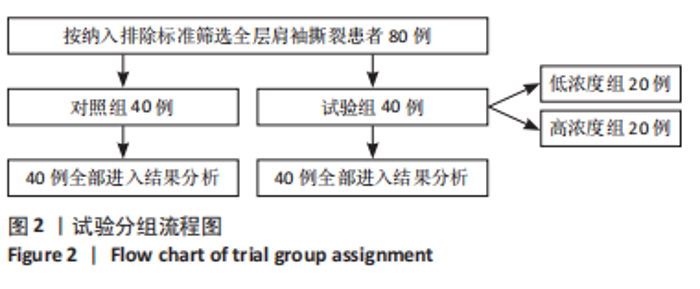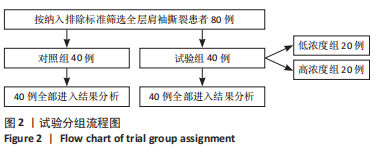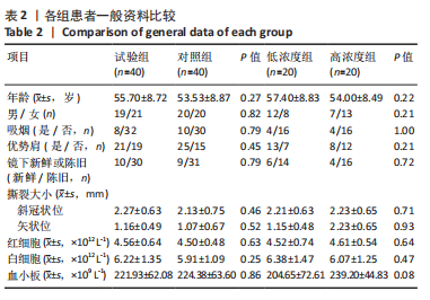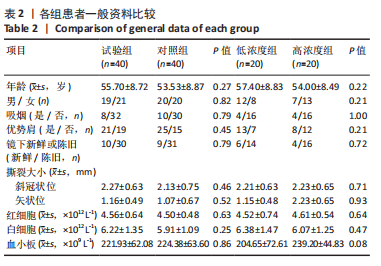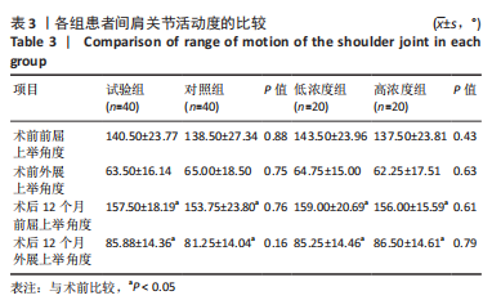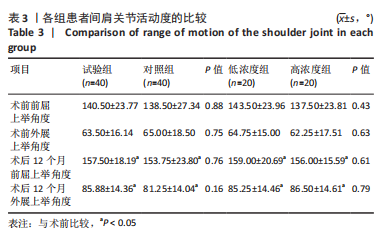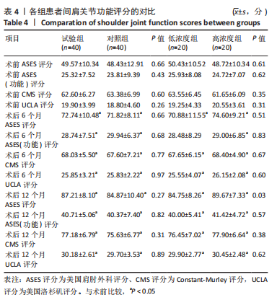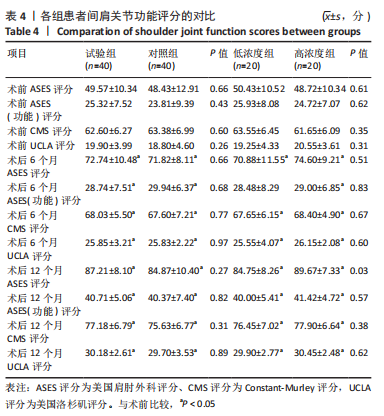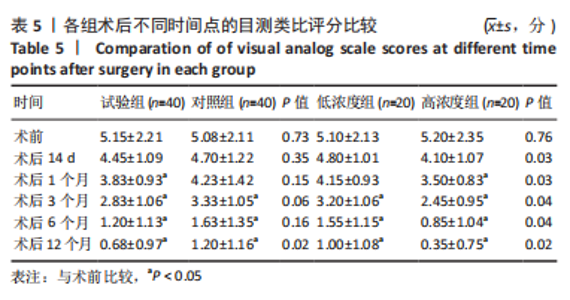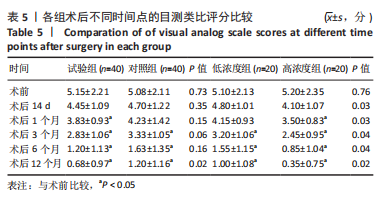[1] ROSSI LA, CHAHLA J, VERMA NN, et al. Rotator Cuff Retears. JBJS Rev. 2020;8(1):e0039.
[2] LIAO HT, MARRA KG, RUBIN JP. Application of platelet-rich plasma and platelet-rich fibrin in fat grafting: basic science and literature review. Tissue Eng Part B Rev. 2014;20(4):267-276.
[3] BAKSH N, HANNON CP, MURAWSKI CD, et al. Platelet-rich plasma in tendon models: a systematic review of basic science literature. Arthroscopy. 2013;29(3):596-607.
[4] ASFAHA S, CENAC N, HOULE S, et al. Protease-activated receptor-4: a novel mechanism of inflammatory pain modulation. Br J Pharmacol. 2007;150(2):176-185.
[5] GWINNER C, SCHEIBEL M. Editorial Commentary: Platelet-Rich Plasma in the Treatment of Rotator Cuff Tears-From Hero to Zero? Arthroscopy. 2020;36(3):658-659.
[6] HURLEY ET, COLASANTI CA, ANIL U, et al. The Effect of Platelet-Rich Plasma Leukocyte Concentration on Arthroscopic Rotator Cuff Repair: A Network Meta-analysis of Randomized Controlled Trials. Am J Sports Med. 2021;49(9):2528-2535.
[7] ZHAO D, HAN YH, PAN JK, et al. The clinical efficacy of leukocyte-poor platelet-rich plasma in arthroscopic rotator cuff repair: a meta-analysis of randomized controlled trials. J Shoulder Elbow Surg. 2021;30(4):918-928.
[8] DRAGOO JL, BRAUN HJ, DURHAM JL, et al. Comparison of the acute inflammatory response of two commercial platelet-rich plasma systems in healthy rabbit tendons. Am J Sports Med. 2012;40(6):1274-1281.
[9] DELONG JM, RUSSELL RP, MAZZOCCA AD. Platelet-rich plasma: the PAW classification system. Arthroscopy. 2012;28(7):998-1009.
[10] MALAVOLTA EA, YAMAMOTO GJ, BUSSIUS DT, et al. Establishing minimal clinically important difference for the UCLA and ASES scores after rotator cuff repair. Orthop Traumatol Surg Res. 2021;108(2):102894.
[11] TASHJIAN RZ, DELOACH J, PORUCZNIK CA, et al. Minimal clinically important differences (MCID) and patient acceptable symptomatic state (PASS) for visual analog scales (VAS) measuring pain in patients treated for rotator cuff disease. J Shoulder Elbow Surg. 2009;18(6):927-932.
[12] KAWABATA M, IMAMURA T, MIYAZONO K. Signal transduction by bone morphogenetic proteins. Cytokine Growth Factor Rev. 1998;9(1):49-61.
[13] MOOJEN DJ, EVERTS PA, SCHURE RM, et al. Antimicrobial activity of platelet-leukocyte gel against Staphylococcus aureus. J Orthop Res. 2008;26(3):404-410.
[14] MCCARREL TM, MINAS T, FORTIER LA. Optimization of leukocyte concentration in platelet-rich plasma for the treatment of tendinopathy. J Bone Joint Surg Am. 2012;94(19):e143(1-8).
[15] VOLOSHIN I, GELINAS J, MALONEY MD, et al. Proinflammatory cytokines and metalloproteases are expressed in the subacromial bursa in patients with rotator cuff disease. Arthroscopy. 2005;21(9):1076.e1-.e9.
[16] FITZPATRICK J, BULSARA M, ZHENG MH. The Effectiveness of Platelet-Rich Plasma in the Treatment of Tendinopathy: A Meta-analysis of Randomized Controlled Clinical Trials. Am J Sports Med. 2017;45(1):226-233.
[17] CROSS JA, COLE BJ, SPATNY KP, et al. Leukocyte-Reduced Platelet-Rich Plasma Normalizes Matrix Metabolism in Torn Human Rotator Cuff Tendons. Am J Sports Med. 2015;43(12):2898-906.
[18] EL-SHARKAWY H, KANTARCI A, DEADY J, et al. Platelet-rich plasma: growth factors and pro- and anti-inflammatory properties. J Periodontol. 2007;78(4):661-669.
[19] BOSWELL SG, SCHNABEL LV, MOHAMMED HO, et al. Increasing platelet concentrations in leukocyte-reduced platelet-rich plasma decrease collagen gene synthesis in tendons. Am J Sports Med. 2014;42(1):42-49.
[20] KIM SJ, YEO SM, NOH SJ, et al. Effect of platelet-rich plasma on the degenerative rotator cuff tendinopathy according to the compositions. J Orthop Surg Res. 2019;14(1):408.
[21] BOHREN Y, TIMBOLSCHI DI, MULLER A, et al. Platelet-rich plasma and cytokines in neuropathic pain: A narrative review and a clinical perspective. Eur J Pain. 2022;26(1):43-60.
[22] TASHJIAN RZ, HUNG M, KEENER JD, et al. Determining the minimal clinically important difference for the American Shoulder and Elbow Surgeons score, Simple Shoulder Test, and visual analog scale (VAS) measuring pain after shoulder arthroplasty. J Shoulder Elbow Surg. 2017;26(1):144-148.
[23] RANDELLI P, ARRIGONI P, RAGONE V, et al. Platelet rich plasma in arthroscopic rotator cuff repair: a prospective RCT study, 2-year follow-up. J Shoulder Elbow Surg. 2011;20(4):518-528.
[24] PANDEY V, BANDI A, MADI S, et al. Does application of moderately concentrated platelet-rich plasma improve clinical and structural outcome after arthroscopic repair of medium-sized to large rotator cuff tear? A randomized controlled trial. J Shoulder Elbow Surg. 2016;25(8):1312-1322.
[25] LIU B, JEONG HJ, YEO JH, et al. Efficacy of Intraoperative Platelet-Rich Plasma Augmentation and Postoperative Platelet-Rich Plasma Booster Injection for Rotator Cuff Healing: A Randomized Controlled Clinical Trial. Orthop J Sports Med. 2021;9(6):23259671211006100.
[26] JO CH, SHIN JS, LEE YG, et al. Platelet-rich plasma for arthroscopic repair of large to massive rotator cuff tears: a randomized, single-blind, parallel-group trial. Am J Sports Med. 2013;41(10):2240-2248.
[27] JO CH, SHIN JS, SHIN WH, et al. Platelet-rich plasma for arthroscopic repair of medium to large rotator cuff tears: a randomized controlled trial. Am J Sports Med. 2015;43(9):2102-2110.
|
